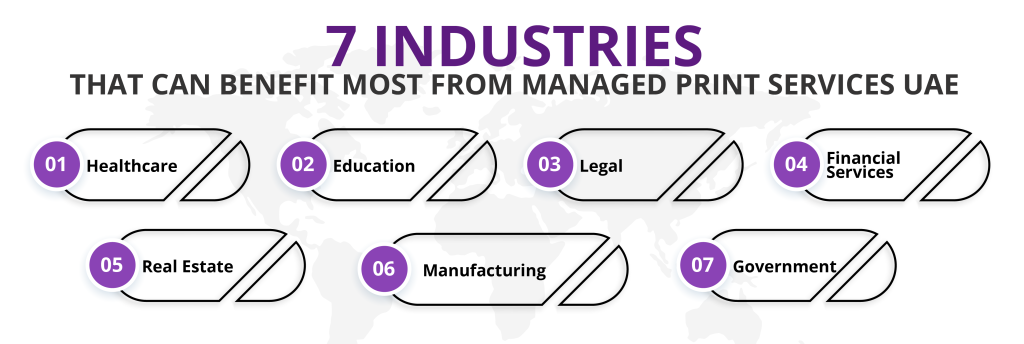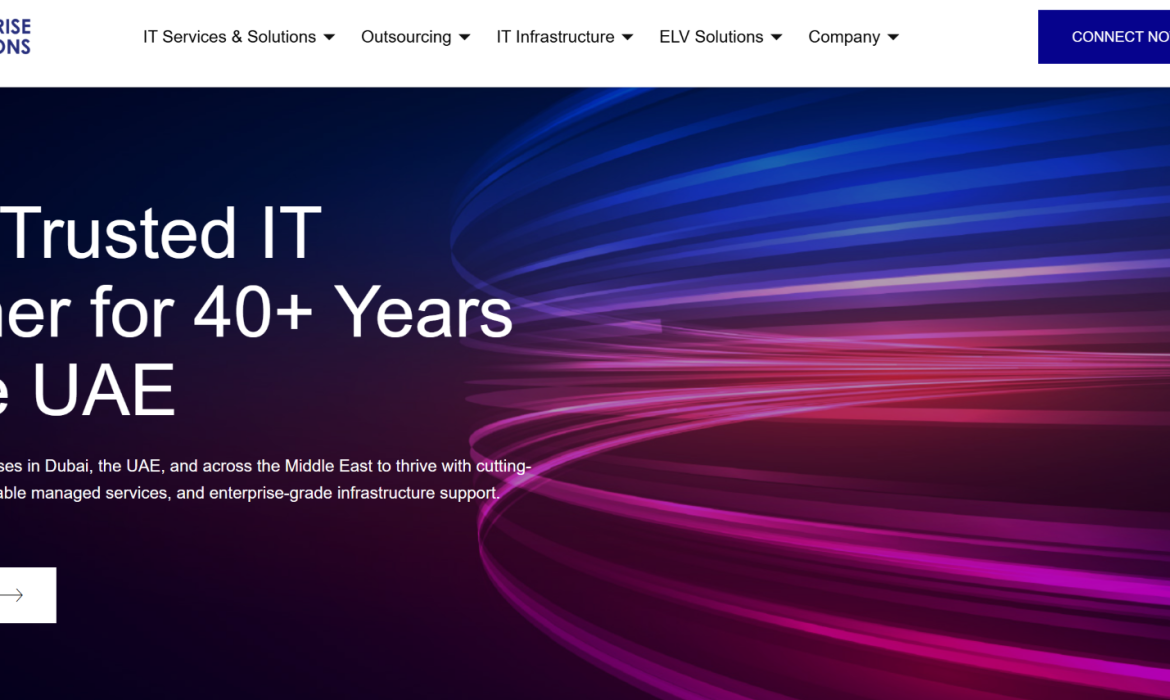10 Creative Features Of A Home Label Printing Machine
A home label printing machine has evolved from being a simple tool for organizing items to a multifunctional device capable of supporting creative projects, small businesses, and personal hobbies.
Whether you’re labeling kitchen containers, organizing cables, or creating branded packaging, modern label printers come packed with impressive features. These features not only enhance the ease of label printing but also allow users to get more imaginative and practical with their usage.
In this blog post, we explore ten creative features that make a home label printing machine a valuable addition to any household. These features combine convenience, innovation, and customization to take your label printing experience to the next level.
Wireless Connectivity and App Integration
One of the most practical features of a home label printing machine is its ability to connect wirelessly to smartphones and tablets. This makes it incredibly easy to design and print labels using dedicated mobile apps.
These apps often come with built-in design templates, fonts, icons, and borders. With wireless functionality, users no longer need to rely on a desktop or wired connection to get their labels printed.
Most thermal label printer models now offer Bluetooth or Wi-Fi connectivity as a standard feature. Whether you’re printing in the kitchen, office, or garage, this flexibility makes label printing more accessible and efficient.
Custom Font and Symbol Libraries
Today’s home label printing machines are far from basic. They include a wide range of custom fonts and symbols that allow users to personalize labels according to their needs.
Whether it’s a playful font for a kid’s toy box or a professional typeface for a home office file, the variety helps in setting the right tone.
Some models even allow users to upload their own fonts or icons, enabling full creative control. This feature is particularly useful when using a label printing machine for small business branding or packaging needs.
Built-in Label Cutter for Precision
A handy built-in cutter is a game-changer for those who require clean and precise label edges. This feature eliminates the need for scissors and ensures every label is neatly cut and ready to use. It’s a small but impactful feature, especially for bulk printing or detailed projects.
With a simple press of a button, the cutter slices the label exactly where it needs to, speeding up the workflow and reducing manual labor. It’s another example of how modern design enhances traditional label printing.
Compatibility with Label Printing Software
Label printing software plays a key role in maximizing the use of a home label printing machine. Many machines are compatible with leading software solutions that provide robust design tools and data import options.
These programs allow users to create complex layouts, add barcodes, import from spreadsheets, and much more.
This compatibility is particularly useful for those using a label printing machine for small business tasks, where inventory labeling and order packaging need precision and consistency.
GCG Enterprise Solutions offers comprehensive office automation services, including managed print services, digital transformation, and intelligent content automation, catering to various industries in the UAE.
Voice Command and Smart Assistant Integration
As smart homes become more common, it’s no surprise that label printing technology is following suit. Some newer models come with the ability to integrate with smart assistants like Alexa or Google Assistant. With simple voice commands, users can print predefined labels or start a printing sequence.
Imagine being in the middle of meal prep and saying, “Alexa, print a spice label for cumin,” and your thermal label printer gets the job done without you touching a button. It’s features like this that blend convenience with innovation.
Eco-Friendly Printing Options
Sustainability is now a consideration for many households. That’s why modern home label printing machines offer eco-friendly printing options.
These include recyclable label tapes, battery-saving modes, and energy-efficient designs. Some machines also come with refillable cartridges and biodegradable label materials.
When paired with eco-conscious thermal label printer technology, users can stay organized without contributing to environmental waste. It’s a thoughtful feature for modern consumers who value green alternatives.
Wide Range of Label Sizes and Materials
Flexibility in label size and type is one of the most creative aspects of a home label printing machine.
From glossy labels for branding to waterproof ones for bathroom or outdoor use, today’s machines support a wide range of materials and dimensions. This allows users to adapt their printing based on the application and aesthetic.
Whether it’s a tiny tag for a keychain or a large label for a storage box, these machines accommodate it all. Some machines even support fabric labels, perfect for clothing or crafts.
QR Code and Barcode Generation
For both personal and small business use, the ability to generate QR codes and barcodes is a significant feature. It allows homeowners to organize their inventory, track storage items, or even add digital links to physical objects.
For instance, labeling a storage box with a QR code that links to its contents list in a Google Sheet is a clever use.
In business, barcodes enable efficient product tracking and scanning. A good label printing software solution will include built-in barcode tools to streamline this process.
Memory for Frequent Labels
Many home label printing machines now come with memory functions that store frequently used labels. This is useful for recurring tasks such as labeling files, kitchen jars, or school supplies.
Instead of designing the same label again and again, users can simply select it from saved options and print instantly.
This feature not only saves time but also ensures uniformity in design. Some models even categorize stored labels, making them easier to access and edit.
Creative Templates for Special Occasions
Whether it’s a birthday, anniversary, or holiday celebration, having pre-designed label templates can make the event more special. Many label printing machines come with creative templates for gift tags, party decorations, greeting cards, and event branding.
These templates simplify the process while giving a professional finish to your personalized touches. It’s especially helpful for DIYers and crafters looking to add flair to their creations.

FAQs
What is a home label printing machine used for?
A home label printing machine is used for organizing household items, labeling storage, creating tags for school supplies, and even managing light business tasks like packaging and branding.
Is a thermal label printer better for home use?
Yes, a thermal label printer is often better for home use because it doesn’t require ink, is cost-effective, and offers fast, clear output with minimal maintenance.
Can I use a label printing machine for small business?
Definitely. A label printing machine for small business is ideal for printing product labels, shipping tags, barcodes, and other branding materials directly from home.
What features should I look for in label printing software?
Good label printing software should include custom templates, barcode generation, font selection, drag-and-drop tools, and the ability to import data for batch printing.
Are home label printers wireless?
Many modern home label printing machines offer wireless connectivity via Bluetooth or Wi-Fi, allowing you to print directly from your phone, tablet, or laptop.
Can I use different label sizes in one machine?
Yes, most machines allow multiple label sizes and materials. Some thermal label printers even support waterproof or glossy finishes.
Is the software compatible with Mac and Windows?
Most label printing software is cross-platform and works on both Mac and Windows systems. Always check compatibility before purchasing.
How long do label rolls last?
Label roll longevity depends on usage. For average home use, a standard roll in a thermal label printer can last several months.
Do label printing machines support QR codes?
Yes, modern home label printing machines can print QR codes, barcodes, and even small icons for organizing and tracking purposes.
Is it expensive to maintain a label printing machine?
Not at all. Especially with a thermal label printer, you save on ink costs. Most maintenance involves occasional cleaning and replacing label rolls.
Conclusion
A home label printing machine is no longer just a tool for printing names on containers. With modern features like wireless connectivity, smart assistant integration, custom fonts, and compatibility with advanced label printing software, these machines have transformed into powerful creative devices.
Whether you’re streamlining your home organization or managing packaging for a small business, today’s thermal label printers offer impressive versatility and ease of use.
By choosing a machine that aligns with your specific needs—be it size flexibility, eco-friendly options, or barcode capabilities—you can turn everyday labeling into a smart, efficient, and even fun experience.
Investing in the right label printing machine for small business or personal use not only saves time but also adds a polished, professional touch to your space or product line.
Why Low-Code Automation Solutions Are the Future of Digital Transformation
In today’s rapidly evolving digital landscape, businesses are under constant pressure to stay competitive, respond quickly to market needs, and embrace innovation.
Traditional software development methods, while effective, are often time-consuming, expensive, and resource-heavy. As a result, organizations are increasingly turning to low-code automation solutions to streamline their operations and accelerate digital transformation.
Low-code platforms empower users with minimal programming knowledge to build applications using visual interfaces, drag-and-drop tools, and pre-built templates.
When paired with automation capabilities, these platforms help companies design end-to-end processes with greater speed and agility. This shift is not just a trend—it’s a necessary evolution that is shaping the future of how enterprises operate and grow.
Accelerating Development Cycles
Traditional development cycles often stretch over weeks or months, involving extensive coding, rigorous testing, and multiple iterations. This slows down digital initiatives and delays time-to-market. Low code solutions reduce development time significantly by enabling developers and non-developers alike to create applications in days.
The visual interface allows stakeholders to understand, modify, and collaborate on application design without getting buried in complex code.
This acceleration plays a vital role in responding to customer demands, regulatory changes, or internal innovation needs. As a result, businesses become more agile and better equipped to adapt to change.
GCG Enterprise Solutions offers comprehensive office automation services, including managed print services, digital transformation, and intelligent content automation, catering to various industries in the UAE.
Empowering Business Users
Digital transformation is not just an IT function—it’s a company-wide initiative. One of the biggest strengths of low-code automation solutions is their ability to empower business users, also known as “citizen developers,” to participate in the software development process.
These users, who best understand their operational challenges, can design workflows, automate repetitive tasks, and build dashboards without waiting for IT intervention.
This democratization of technology reduces bottlenecks in project delivery and bridges the gap between IT departments and business units. It fosters a culture of innovation where employees at all levels contribute to digital growth.
Reducing Costs and Complexity
Developing and maintaining custom software can be expensive. It requires a team of skilled developers, extensive testing, and long-term maintenance.
On the other hand, low code solutions offer a more cost-effective approach by reducing the dependency on traditional coding. Organizations save on development costs, IT resources, and ongoing support.
Additionally, low-code platforms come with built-in security, compliance, and integration tools, which simplify the application lifecycle.
Businesses no longer need to purchase multiple software components or deal with compatibility issues, which reduces complexity and overhead.
Enabling Scalable Automation
Automation has become a cornerstone of digital transformation, helping businesses reduce manual work, minimize errors, and improve efficiency.
Low-code automation solutions bring scalability to automation efforts by allowing enterprises to quickly develop, test, and deploy automated workflows across departments.
From customer service to finance and HR, every business function can benefit from automated processes.
Low-code platforms support process mining, robotic process automation (RPA), and AI integration, making it easier to design intelligent workflows that can scale as the organization grows.
Improving Integration Capabilities
Modern businesses use a variety of software applications for different operations, from CRM and ERP to HR and accounting. One major challenge is integrating these systems to ensure seamless data flow and collaboration.
Low code solutions typically come with connectors, APIs, and integration capabilities that simplify data exchange between different platforms.
This level of integration enables businesses to create unified systems where information is easily accessible and actionable. It enhances data accuracy, supports better decision-making, and ensures that different teams are working from a single source of truth.
Enhancing Customer Experiences
Customers today expect fast, personalized, and frictionless interactions with businesses. Digital transformation efforts must prioritize improving customer experiences, and low-code automation solutions contribute significantly to this goal.
By enabling faster development of customer-facing applications, chatbots, portals, and self-service options, companies can respond to customer needs in real time.
Moreover, these platforms allow for continuous updates and iterations based on user feedback, which ensures that customer experiences are always evolving and improving.
Supporting Agile and DevOps Practices
The future of business depends on agility. Agile and DevOps methodologies emphasize iterative development, continuous delivery, and cross-functional collaboration. Low code solutions are naturally aligned with these practices.
Their visual interface, real-time collaboration tools, and pre-built components allow teams to work faster and adapt quickly to changing requirements.
This agility means that businesses can launch MVPs, test ideas, gather feedback, and pivot strategies without extensive rework or investment.
Promoting Innovation at Scale
In the past, digital innovation was often limited to large enterprises with massive IT budgets. Now, with low-code automation solutions, even small and mid-sized businesses can innovate without breaking the bank. These platforms level the playing field by providing powerful tools that are easy to use and scalable.
Organizations can build custom apps, automate internal processes, and enhance digital services without hiring a large team of developers. This capability to innovate at scale fosters a more competitive and inclusive digital ecosystem.
Ensuring Security and Compliance
Security and regulatory compliance are critical components of any digital transformation journey. Low-code platforms are designed with enterprise-grade security protocols, including data encryption, role-based access, and compliance tools.
Low code solutions also support audit trails and monitoring, which makes it easier for organizations to track activities and meet regulatory requirements.
These built-in features reduce the risk of security breaches and non-compliance, which can be costly and damaging to reputation.
Future-Proofing the Organization
Technology is evolving at a breakneck pace, and businesses must future-proof their operations to remain relevant. Low-code automation solutions provide a flexible, scalable, and sustainable path to transformation.
As new technologies like AI, machine learning, and blockchain become more prevalent, low-code platforms are evolving to integrate these capabilities seamlessly.
By investing in low-code platforms today, organizations position themselves to easily adapt to emerging technologies and shifting market demands.

FAQs
What is a low-code automation solution?
A low-code automation solution is a software development approach that uses visual interfaces, drag-and-drop tools, and pre-built templates to allow users to create applications and automate workflows with minimal coding effort.
How do low code solutions differ from traditional coding?
Low code solutions use graphical interfaces instead of complex programming languages, making it easier and faster to develop applications. Traditional coding requires in-depth knowledge of programming, which slows down development and requires more resources.
Can low-code platforms integrate with existing systems?
Yes, most low-code platforms offer pre-built connectors, APIs, and integration tools that allow seamless communication with existing software such as CRM, ERP, and HR systems.
Are low-code automation solutions secure?
Absolutely. Enterprise-grade low-code platforms include built-in security features like encryption, access controls, and audit trails to protect sensitive data and meet regulatory compliance standards.
Who can use low-code platforms?
Both professional developers and non-developers (citizen developers) can use low-code platforms. Business users can build simple apps, while developers can focus on more complex tasks or extend functionality through code.
Is low-code suitable for large enterprises?
Yes, low-code platforms are designed to scale and support enterprise-grade applications. Many large organizations use them to accelerate digital transformation across departments and business units.
How does low-code support digital transformation?
Low-code supports digital transformation by accelerating application development, empowering business users, automating processes, and enabling organizations to adapt quickly to changes in technology and customer expectations.
What industries benefit from low-code automation?
Virtually all industries—finance, healthcare, manufacturing, education, and retail—can benefit from low-code automation by optimizing internal operations, improving customer service, and launching new digital services.
Can low-code applications be customized?
Yes, low-code platforms allow for extensive customization through pre-built modules and custom code, offering flexibility to meet unique business needs.
Is low-code just a trend?
No, low-code is not a passing trend. It is a foundational technology for the future of software development and digital transformation. As demand for rapid innovation grows, low-code platforms will become essential to business success.
Conclusion
By adopting low-code automation solutions, organizations are not just keeping up—they are leaping ahead. These tools break down traditional barriers to digital innovation, reduce dependency on technical expertise, and enable faster, smarter transformation.
Whether it’s enhancing customer engagement, improving internal workflows, or preparing for future technologies, low-code is paving the way toward a more agile and intelligent digital future
Top 5 Low-Code Automation Tools Revolutionizing Workflows in 2025
In 2025, organizations across industries are embracing digital transformation with more urgency than ever. As businesses scale, streamline, and strive for operational excellence, automation has become a key driver of success.
Among the most powerful enablers of this transformation are low-code automation tools—platforms designed to simplify complex tasks and reduce the burden on IT departments.
These tools empower non-technical users, improve time-to-market, and drastically cut development costs.
The beauty of low code lies in its accessibility—minimal hand-coding is required, allowing businesses to adapt quickly without waiting on traditional development cycles. Below, we explore the top five low-code automation tools that are revolutionizing workflows in 2025.
Microsoft Power Automate
Microsoft Power Automate continues to dominate the automation landscape in 2025. As part of the Microsoft Power Platform, it offers seamless integration with other Microsoft services like SharePoint, Teams, Excel, and Dynamics 365.
Its pre-built templates allow businesses to automate everything from email alerts to data collection.
With Power Automate, workflows that once required days of custom coding can now be built in hours. The tool has evolved to support AI capabilities, including sentiment analysis and intelligent document processing, making it an indispensable part of the modern digital workplace.
Its user-friendly interface and growing library of connectors ensure organizations can stay agile and responsive to change.
OutSystems: Enterprise
OutSystems stands out for its scalability and enterprise readiness. It offers one of the most advanced low-code automation solutions, supporting the development of mobile and web applications with rich UI, logic, and back-end integration.
Businesses use OutSystems to not only automate workflows but also to modernize legacy systems and create customer-facing apps.
Its visual development environment is intuitive and powerful, enabling both citizen developers and seasoned professionals to work collaboratively.
In 2025, OutSystems has expanded its capabilities with AI-powered suggestions and real-time performance monitoring, helping teams build robust solutions with fewer errors and faster rollouts.
Appian
Appian continues to make waves with its combined offering of low code solutions and business process management (BPM). Its strong focus on process modeling allows organizations to build workflows that mirror real-world operations.
In 2025, Appian includes features like robotic process automation (RPA), AI integration, and data fabric for unified access to enterprise data.
What sets Appian apart is its strong governance, which ensures that even as citizen developers build solutions, IT maintains control over security and compliance.
The platform is ideal for highly regulated industries such as finance, healthcare, and government, where automation must align with strict rules and standards.
GCG Enterprise Solutions offers comprehensive office automation services, including managed print services, digital transformation, and intelligent content automation, catering to various industries in the UAE.
Kissflow
Kissflow has carved out a niche by providing a clean, simple interface for non-developers to create workflow applications. With a strong emphasis on ease-of-use, Kissflow is often chosen by HR, finance, and operations teams to automate tasks like approvals, onboarding, invoice processing, and ticket tracking.
In 2025, Kissflow continues to expand its capabilities with better integration options and AI-driven features like predictive analytics and chatbots.
While it might not be as powerful as OutSystems or Appian in terms of custom development, it excels in empowering business users to solve their problems independently.
Kissflow represents a democratized approach to automation, where business units can quickly implement and iterate on their own processes, reducing bottlenecks and increasing overall productivity.
Mendix
Mendix is another powerhouse in the low-code automation solution space. Known for its strong DevOps capabilities and cloud-native architecture, Mendix supports everything from rapid prototyping to full-scale enterprise deployment.
Developers appreciate Mendix’s ability to combine visual modeling with code when needed, giving them the flexibility to build highly customized workflows.
In 2025, Mendix has doubled down on AI integration, collaboration tools, and application performance monitoring. Its drag-and-drop interface and robust integration capabilities make it a preferred choice for businesses looking to streamline operations while maintaining scalability and control.
Mendix has also invested heavily in community support and training, ensuring that organizations adopting the platform can hit the ground running, regardless of team size or skill level.
Why These Tools Are Changing the Game in 2025
The rise of low code solutions reflects a broader shift in how companies view software development and digital transformation.
Instead of relying solely on overworked IT departments, organizations now empower non-developers—also known as citizen developers—to automate repetitive processes and build internal applications.
These tools bridge the gap between business needs and technical execution, enabling faster innovation, lower costs, and greater alignment.
Whether it’s reducing errors in manual processes or accelerating app deployment times, these platforms have made automation accessible to a broader audience.
Moreover, many of these tools have evolved to include AI and machine learning features, making them smarter and more capable.
Instead of just automating static processes, they can now adapt based on changing inputs, user behavior, or historical data.
In 2025, the trend is clear: automation is no longer optional. Companies that fail to adopt low-code platforms risk falling behind in efficiency, agility, and customer satisfaction.
The future of workflow automation lies in empowering more people across the organization to innovate—and these five tools are leading the way.

FAQs
What is a low-code automation tool?
A low-code automation tool is a software platform that allows users to build applications and automate workflows using visual development environments with minimal hand-coding.
How do low-code solutions differ from traditional development?
Low-code solutions reduce the need for writing complex code, allowing faster development and enabling business users to participate in the creation of digital solutions.
Can I integrate low-code platforms with existing enterprise systems?
Yes, most low-code automation tools offer integrations with ERP systems, CRMs, databases, and third-party APIs to ensure seamless connectivity with existing workflows.
Are these tools secure enough for enterprise use?
Leading platforms like Appian, OutSystems, and Mendix are built with enterprise-grade security features and support compliance with industry standards such as GDPR, HIPAA, and ISO.
Do I need to be a developer to use low-code platforms?
No, these platforms are designed for both technical and non-technical users. Many offer drag-and-drop interfaces and guided workflows that simplify the development process.
How do low-code platforms support AI?
Modern low-code platforms often include built-in AI capabilities such as natural language processing, image recognition, and predictive analytics to enhance workflow intelligence.
What industries benefit most from low-code automation?
Industries such as finance, healthcare, logistics, manufacturing, and retail benefit significantly due to the high volume of manual processes and regulatory requirements.
What’s the difference between low-code and no-code?
Low-code platforms require some coding and are typically used by IT professionals and business users, while no-code platforms are fully visual and geared toward non-technical users.
Is there a learning curve for using low-code automation tools?
Most tools are designed to be user-friendly. While there is a learning curve, especially for more complex use cases, training resources and community support are widely available.
Which low-code tool is best for small businesses?
Kissflow and Microsoft Power Automate are particularly popular among small businesses due to their simplicity, affordability, and ability to integrate with commonly used tools.
Conclusion
As we navigate through 2025, the demand for faster, more efficient workflows continues to rise. The five tools discussed—Microsoft Power Automate, OutSystems, Appian, Kissflow, and Mendix—are not just streamlining operations; they’re redefining how businesses approach problem-solving and innovation.
These platforms empower both IT professionals and business users to build, automate, and scale without traditional development bottlenecks. With visual interfaces, AI capabilities, and powerful integrations, they offer a competitive edge to organizations aiming for agility in a rapidly evolving market.
Whether you’re a startup looking to automate basic processes or an enterprise modernizing legacy systems, adopting a low-code automation solution is a strategic move. The future of work is collaborative, intelligent, and fast—and these low code solutions are leading the way.
Now is the time to evaluate your existing workflows, identify automation opportunities, and invest in the tools that will shape your digital future.
GCG Enterprise Solutions Unveils Dedicated IT Services Website
Development Marks a New Era in Digital Transformation
GCG Enterprise Solutions, a leading name in enterprise technology has proudly unveiled its dedicated IT Services website: www.gcg.ae/IT. This milestone marks the latest step in the Company’s strategic evolution from a traditional print services provider to a comprehensive IT solutions leader, reflecting its commitment to innovation, customer trust, and digital growth.
Driven by increasing customer demand and a clear vision to lead in digital transformation, GCG Enterprise Solutions underwent a significant transformation last year, rapidly expanding its IT Services division to earn the trust of both longstanding clients as well as new customers seeking a reliable technology partner. Today, the Company’s IT portfolio delivers a broad spectrum of end-to-end technology solutions designed to meet the evolving needs of modern enterprises.
The newly launched IT Services website is fully integrated into the existing GCG Enterprise Solutions domain, ensuring a seamless and consistent brand experience. The site is designed to provide customers with easy access to the full range of IT services, in-depth information, and direct contact with GCG Enterprise Solutions’ team of experts. This user-centric platform underscores the Company’s commitment to customer engagement and digital excellence.
“We are excited to introduce our dedicated IT Services website, which represents both our growth and our unwavering focus on delivering value to our customers,” said Hassan Allahham, Service Director at GCG Enterprise Solutions. “Our transformation into a full-fledged IT Services provider has been met with strong market adoption, and this new platform will further empower our clients to explore innovative solutions and connect with our experts.”
Key highlights of the new IT Services website include a comprehensive overview of the Company’s expanded IT services portfolio; easy navigation to explore solutions tailored to diverse business needs; direct access to expert consultation and support, plus insights into the Company’s vision for digital transformation and enterprise technology.
GCG Enterprise Solutions’ new IT Services website represents a significant step in the company’s ongoing commitment to digital innovation and customer-focused solutions. The platform is now live and available for exploration at www.gcg.ae/IT.
About GCG Enterprise Solutions
GCG-Enterprise Solutions (A Ghobash Group Enterprise) was established in 1982 to lead across the digital imaging and office services solutions sector in the UAE market. Today, the company caters to the exacting needs of an enviable list of regional clients, extending the most comprehensive portfolio of Enterprise Information Management, Digital Transformation and Interactive Smart Solutions in the GCC. Delivering unrivalled expertise and service standards, backed-up by partnerships with leading global technology brands, a 200+ strong team of specialists, as well as regional offices across the UAE, Oman and the Kingdom of Saudi Arabia, GCG-Enterprise Solutions stands at the forefront of integrating digital enterprise solutions which benefit its client’s businesses. The Company’s unique value-proposition of “Business made easy” impacts all aspects of its operations and serves as a perpetual promise to all of its stakeholders.
www.gcg.ae
GCG Enterprise Solutions Expands to Offer Comprehensive End-to-End AV Solutions
GCG Enterprise Solutions which serves as a leading digital transformation solutions provider, has announced the strategic expansion of its audio-visual (AV) business, resulting in its enhanced capability to deliver fully integrated, end-to-end AV solutions. This evolution positions GCG Enterprise Solutions as the preferred one-stop partner for organizations seeking modern, future-ready audio-visual infrastructure.
As demand for advanced AV systems continues to surge across corporate, education, hospitality, and government sectors, GCG Enterprises Solutions has responded by moving beyond the sale of individual products such as interactive panels and video walls. The Company now delivers customized, integrated AV systems designed to enhance collaboration, communication, and engagement in any environment. This shift underscores the Company’s commitment to innovation, exceptional customer experience, and the deployment of future-ready technology.
Comprehensive AV Solutions for Every Need
GCG Enterprise Solutions’ expanded portfolio includes a wide range of services and solutions tailored to diverse client requirements:
- Conference Room Solutions: Fully equipped spaces featuring advanced displays, audio, video, and collaboration tools for seamless meetings.
- Professional Audio Systems: Highquality speakers, microphones, and mixers designed for venues of all sizes.
- Smart & Hybrid Classrooms: AV tools that support digital learning, remote participation, and interactive teaching experiences.
- Auditorium & Event Space Setup: Endto-end AV solutions for large venues, covering everything from acoustics to control systems.
- Digital Signage: Dynamic content delivery for retail, public spaces, and campuses.
- Public Address (PA) Systems: Robust solutions for clear, reliable communication in schools, offices, malls, and more.
- System Design, Integration, Support, and Maintenance: Expert services to ensure seamless implementation and ongoing performance.
By partnering with leading global AV brands and experts, GCG Enterprise Solutions delivers the best-in-class end-to-end AV equipment and solutions, tailored to the unique and exacting needs of clients, while ensuring seamless integration with existing IT infrastructure. By leveraging future-proof technology, the GCG Enterprise Solutions team can offer scalable designs which can accommodate growth, while extending dedicated support and consultation at every stage, from initial design to ongoing maintenance.
“Our expansion into comprehensive AV solutions reflects our commitment to meeting the evolving needs of our clients,” said Baiju KC, Sales Director at GCG Enterprise Solutions. “By offering integrated, customized systems and expert support, we are empowering organizations to create more engaging, collaborative, and future-ready environments.”
About GCG Enterprise Solutions
GCG-Enterprise Solutions (A Ghobash Group Enterprise) was established in 1982 to lead across the digital imaging and office services solutions sector in the UAE market. Today, the company caters to the exacting needs of an enviable list of regional clients, extending the most comprehensive portfolio of Enterprise Information Management, Digital Transformation and Interactive Smart Solutions in the GCC. Delivering unrivalled expertise and service standards, backed-up by partnerships with leading global technology brands, a 200+ strong team of specialists, as well as regional offices across the UAE, Oman and the Kingdom of Saudi Arabia, GCG-Enterprise Solutions stands at the forefront of integrating digital enterprise solutions which benefit its client’s businesses. The Company’s unique value-proposition of “Business made easy” impacts all aspects of its operations and serves as a perpetual promise to all its stakeholders.
How Low-Code Automation Solutions Help Cut Costs and Boost Productivity
In today’s rapidly evolving digital landscape, organizations are under immense pressure to do more with less. Reducing operational costs while simultaneously enhancing employee productivity has become the holy grail of modern business strategy.
Achieving this balance demands more than just working harder—it requires working smarter. This is where the rise of low-code automation solutions is making a transformative impact.
These platforms are enabling businesses to develop applications and automate tasks with greater speed, flexibility, and cost-efficiency than ever before.
By offering visual development interfaces and pre-built templates, they allow users to build complex workflows without writing extensive code.
This significantly shortens development time and lowers IT costs. In this article, we’ll explore how these solutions help organizations reduce spending and boost output across departments.
Understanding Low-Code Automation
Low-code automation solutions are designed to simplify application development and process automation.
Instead of writing traditional code line by line, users work with drag-and-drop interfaces that allow them to model workflows, set business rules, and integrate with external systems.
This approach benefits both developers and non-technical users. Developers can accelerate their tasks using visual components, while “citizen developers”—employees outside of the IT team—can build or modify apps to solve specific departmental challenges. This collaboration fosters agility across the organization.
Cutting Development and Operational Costs
One of the most immediate advantages of low-code platforms is the significant reduction in development costs.
Building software applications using traditional methods requires extensive coding, skilled developers, testing environments, and long development cycles. All of this adds up to substantial expenses.
Low code solutions offer a smarter alternative. Because of the pre-built logic and reusable components, applications can be developed in a fraction of the time.
Businesses don’t need large developer teams or third-party consultants for most tasks. This not only minimizes labor costs but also shortens project timelines, saving additional resources.
Accelerating Time to Value
The faster a business can deploy a new solution, the sooner it can start reaping benefits. Whether it’s a customer-facing portal, an internal workflow system, or a compliance tracking tool, low code solutions significantly reduce the time it takes to bring ideas to life.
For example, a manual invoice approval process that used to take weeks to digitize can now be automated in just days.
This kind of rapid deployment means fewer delays, quicker returns, and more satisfied stakeholders. The speed and adaptability of these platforms give organizations a major competitive edge in fast-moving markets.
GCG Enterprise Solutions offers comprehensive office automation services, including managed print services, digital transformation, and intelligent content automation, catering to various industries in the UAE.
Enabling Citizen Developers
Empowering employees outside of IT to solve problems is one of the most powerful advantages of this approach. Low-code platforms provide intuitive tools that allow marketing, HR, finance, and other departments to build their own custom applications.
When employees are given the autonomy to streamline their own workflows, productivity naturally increases. Instead of submitting a ticket and waiting weeks for IT to deliver a solution, a department can build and deploy the tool it needs almost immediately.
This reduces bottlenecks, improves response times, and ensures solutions are more closely aligned with actual business needs.
Improving Workflow Automation
Repetitive, manual tasks consume valuable time and resources. Whether it’s employee onboarding, data entry, or customer support ticketing, manual processes are prone to delays and human error. Automation is the key to unlocking efficiency in these areas.
With a low-code automation solution, businesses can easily design workflows that automate these tasks from end to end. For example, an HR department could use automation to send welcome emails, collect documents, assign training modules, and create user accounts—all triggered by a single event.
This level of automation reduces effort, ensures consistency, and allows staff to focus on higher-value responsibilities.
Enhancing System Integration
Most companies rely on a variety of digital tools to run their operations—CRMs, ERPs, helpdesk platforms, spreadsheets, and more. One of the biggest challenges is getting these systems to talk to each other seamlessly.
Low-code platforms simplify integration by offering connectors and APIs that allow different systems to share data and trigger actions across platforms.
This connectivity ensures that departments don’t operate in silos and that information flows smoothly. When employees have access to real-time, accurate data, their decision-making improves and productivity climbs.
Supporting Scalability and Growth
As businesses grow, their systems and workflows must scale to meet new demands. Low-code platforms offer the flexibility to support evolving requirements without the need for total system overhauls.
A process that starts as a simple tool for five employees can be easily modified and scaled to support 500. Features can be added or removed as needed, ensuring the solution always matches the business’s size and scope.
This scalability reduces the need for frequent technology replacements and supports long-term cost efficiency.
Reducing IT Backlogs
IT departments are often overwhelmed by requests for new tools, updates, or process automations. These backlogs create delays and hinder innovation across the business.
By allowing other departments to take charge of their own automation needs, a low-code automation solution eases the burden on IT teams. Instead of building every solution from scratch, IT can act as an advisor, focusing on complex challenges and governance.
This redistribution of workload leads to faster problem-solving and greater productivity organization-wide.
Minimizing Training and Onboarding Time
Traditional development environments often require extensive training for both users and developers. In contrast, low-code platforms are designed for simplicity.
Their intuitive interfaces mean that new users can get started quickly, and organizations don’t need to invest heavily in training programs.
This ease of use reduces the time it takes to onboard new employees and ensures faster adoption of new tools. Employees can become productive more quickly, contributing to the bottom line sooner.

Encouraging Continuous Innovation
With fast development cycles and the freedom to experiment, businesses using low code solutions are better positioned to innovate. Teams can prototype new ideas, test workflows, and refine their approach without significant costs or delays.
This continuous improvement cycle is crucial for staying ahead in today’s digital economy. Rather than launching large, high-risk projects, businesses can test small changes and scale what works.
The ability to adapt and evolve quickly ensures that they remain competitive and responsive to market needs.
FAQs
What is the primary benefit of a low-code platform?
The main benefit is faster application development with minimal coding, which reduces costs and accelerates digital transformation.
How does low-code automation improve productivity?
It automates repetitive tasks, allowing employees to focus on more strategic, high-impact work.
Can low-code platforms integrate with existing systems?
Yes, most platforms offer built-in connectors and APIs to integrate with CRM, ERP, and other enterprise tools.
Do low-code tools require technical expertise?
No. They are designed for both developers and business users with little to no coding experience.
Are these platforms secure for business use?
Reputable platforms follow industry-standard security practices including encryption, access controls, and compliance certifications.
What types of apps can be built using low-code?
From customer portals to internal HR workflows, low-code supports a wide range of use cases.
Is it suitable for large enterprises?
Absolutely. Many large organizations use low-code for both enterprise-grade and departmental applications.
Can we customize low-code apps?
Yes. These platforms support customization through configuration and, when needed, traditional coding extensions.
Does low-code replace traditional development?
It complements it. For complex applications, traditional coding may still be required, but low-code speeds up many other tasks.
What is the ROI of using low-code automation?
Organizations often see faster deployment, lower costs, improved efficiency, and greater innovation—all contributing to a strong return on investment.
Conclusion
Low-code automation is not just a technological shift; it’s a strategic advantage. By reducing development costs, accelerating deployment, empowering employees, and streamlining operations, these platforms are driving meaningful transformation in how businesses operate.
As organizations seek to cut costs and boost productivity, adopting a low-code automation solution becomes an obvious step forward.
The rise of low code solutions has given businesses the agility and efficiency they need to navigate complexity and remain competitive. Whether you’re a startup or a global enterprise, embracing this approach can unlock new levels of performance, resilience, and innovation.
GCG Enterprise Solutions Partners with Squirro to Bring AI-Driven Insights and Enterprise Search to the Region
GCG Enterprise Solutions, a leading provider of digital transformation and intelligent automation solutions, has proudly announced its strategic partnership with Squirro, the Switzerland-based leader in Generative AI-powered enterprise search. The collaboration marks a significant step forward in empowering organizations across the region to unlock actionable insights from their unstructured data using Generative AI technologies.
Squirro is an enterprise-grade Generative AI platform built to extract insight and value from fragmented, large-scale organizational knowledge. It achieves this by leveraging a powerful combination of Generative AI-driven enterprise search, knowledge graphs, and conversational AI, all built on a modern Retrieval Augmented Generation (RAG) architecture. This allows users to search, chat with, and uncover insights from their enterprise data, delivering precise, context-aware results grounded in their own organizational knowledge. Squirro was named as an Emerging Leader in the 2025 Gartner® Innovation Guide for Generative AI Technologies in the following two categories: Generative AI Engineering & AI Knowledge Management Apps/General Productivity Squirro has been acknowledged by Gartner as a Leader in the 2025 Emerging Market Quadrants for both “AI Knowledge Management & General Productivity Platforms”, as well as “AI Engineering”.
Through this partnership, GCG Enterprise Solutions adds Squirro’s cutting-edge Generative AI platform to its portfolio, offering clients a context-aware, secure, and scalable solution that drives AI-driven decision-making across sectors including finance, government, utilities, and manufacturing.
Speaking about the new tie-up, Bernd Schopp, Chief Partnership Officer at Squirro stated that “Our partnership with GCG Enterprise Solutions is aimed at delivering significant value to clients by transforming how knowledge is discovered, consumed, and acted upon. Squirro’s technology unifies data across silos, providing a 360° contextual view of operations, customers, and risks. Clients benefit from increased productivity and innovation through Generative AI-powered dashboards, smart alerts, and enterprise-grade generative AI capabilities. Importantly, the solution ensures secure and compliant access to insights, fully aligned with regional data protection and governance standards”.
Further elaborating on the strategic capabilities which Squirro can deliver, Walid Al Awadi, Head of Digital Transformation at GCG Enterprise Solutions, stated that “Partnering with Squirro aligns seamlessly with our vision to lead digital transformation in the region. This collaboration enhances our generative AI offerings, further strengthening our position in Knowledge Management, Compliance, and Decision Intelligence. Squirro’s platform also complements our ecosystem with native integrations to Salesforce, ServiceNow, Microsoft 365, and legacy systems, supporting complex transformation mandates in government modernization, financial services, and national data strategy initiatives”.
About GCG Enterprise Solutions:
GCG Enterprise Solutions (A Ghobash Group Enterprise) was established in 1982 to lead across the digital imaging and office services solutions sector in the UAE market. Today, the company caters to the exacting needs of an enviable list of regional clients, extending the most comprehensive portfolio of Enterprise Information Management, Digital Transformation and Interactive Smart Solutions in the GCC. Delivering unrivalled expertise and service standards, backed up by partnerships with leading global technology brands, a 200+ strong team of specialists, as well as regional offices across the UAE, Oman and the Kingdom of Saudi Arabia, GCG Enterprise Solutions stands at the forefront of integrating digital enterprise solutions which benefit its clients’ businesses. The Company’s unique value proposition of “Business made easy” impacts all aspects of its operations and serves as a perpetual promise to all of its stakeholders.
www.gcg.ae
About Squirro
Squirro is a global leader in enterprise-grade generative AI and knowledge graph solutions, specializing in semantic search, insights, and automation. Since its founding in 2012, the company has been at the forefront of AI innovation, empowering organizations with intelligent technology that enhances decision-making and efficiency. Headquartered in Switzerland, Squirro operates across key global markets, with offices in the United States, the UK, and Singapore.
Trusted by industry leaders such as the European Central Bank, the Bank of England, Standard Chartered Bank, Oversea-Chinese Banking Corporation and Henkel, Squirro is committed to delivering cutting-edge AI solutions. Its mission is to augment human intelligence, streamline processes, and unlock actionable insights, enabling enterprises to navigate complexity and harness the full potential of their data.
www.squirro.com
10 Real-World Use Cases of Low Code Solutions in Enterprises
The demand for faster, smarter, and more adaptable enterprise applications is at an all-time high. From customer engagement to internal operations, organizations are seeking flexible tools that support rapid development without exhausting IT resources.
That’s where low code solutions come into play. These platforms enable both developers and non-developers to create powerful applications using visual interfaces, prebuilt modules, and minimal manual coding.
Modern enterprises are leveraging these platforms not just for quick fixes but for strategic digital transformation. In this blog post, we explore 10 real-world use cases that show how organizations are using low code to improve productivity, agility, and innovation.
CRM Customization for Sales Acceleration
Many enterprises find that off-the-shelf CRM systems fall short of capturing their unique sales processes. Through low code platforms, businesses can build customized CRM tools that align with their workflows—without writing extensive code.
This includes custom dashboards, automatic lead routing, real-time reporting, and integration with third-party platforms. The result is a system that supports sales teams in managing leads, contacts, and opportunities more efficiently.
Automating Employee Onboarding
Human Resources departments often deal with a tedious and repetitive onboarding process. A low-code automation solution can streamline this by creating automated workflows for document collection, training assignments, hardware requests, and policy acknowledgments.
All these steps can be tracked within a centralized dashboard. Not only does this improve the employee experience, but it also ensures HR compliance and operational efficiency.
Real-Time Supply Chain Visibility
Managing a complex supply chain requires access to real-time data from suppliers, inventory systems, and logistics providers. With low code solutions, enterprises can create supply chain dashboards that integrate multiple data sources, generate alerts for delays, and forecast inventory requirements.
These applications help procurement and operations teams make data-driven decisions faster and reduce bottlenecks across the entire supply chain.
Custom IT Helpdesk Portals
Standard helpdesk software often lacks flexibility. Enterprises can use low code tools to build custom ticketing systems tailored to their unique support workflows. These tools can feature automated ticket routing, status updates, and knowledge base integration.
IT teams benefit from increased transparency and reduced response times, while employees get a more streamlined experience when seeking technical support.
GCG Enterprise Solutions offers comprehensive office automation services, including managed print services, digital transformation, and intelligent content automation, catering to various industries in the UAE.
Ensuring Regulatory Compliance
Industries such as healthcare, banking, and manufacturing are tightly regulated and require constant monitoring to avoid violations. Enterprises can use low code platforms to build applications that track compliance metrics, manage documentation, and flag anomalies.
These systems make it easier for organizations to stay updated with evolving regulations and demonstrate accountability through audit logs and historical records.
Mobile Apps for Field Teams
Field workers, including maintenance personnel, inspectors, and delivery agents, need reliable access to information while on the go. With low code platforms, enterprises can create mobile applications that function offline, sync automatically, and allow users to submit reports, photos, or signatures from any location.
These tools eliminate paperwork and speed up task completion, all while integrating with backend systems for real-time updates.
Finance and Budget Approval Automation
Finance teams often handle multiple budget requests that require validation and approval at different levels. A low-code automation solution allows organizations to build financial workflows that automate approval chains, notify stakeholders, and verify budget codes before finalizing requests.
These applications minimize errors, reduce turnaround time, and maintain a clear audit trail for compliance purposes.
Customer Self-Service Platforms
Consumers now expect to manage their accounts, resolve issues, and track services online. Businesses are using low code tools to develop self-service portals that provide these capabilities securely.
Customers can reset passwords, update information, check service statuses, and even initiate returns—reducing the need for support calls and improving overall satisfaction.
End-to-End Campaign Management
Marketing departments rely on data from multiple channels—email platforms, CRMs, social media, and analytics tools. Low code platforms allow marketing teams to centralize campaign planning, execution, and performance tracking.
Custom apps can be developed to manage calendars, measure KPIs, trigger follow-up actions, and generate performance summaries. The rapid build and deploy capabilities help teams remain agile in fast-changing markets.
Legacy System Extension and Integration
Older enterprise systems often lack modern interfaces or integration capabilities. Rather than replacing them, businesses are using low code solutions to build new layers on top of legacy platforms.
These extensions allow users to interact with outdated systems through modern web or mobile applications. Enterprises can maintain their existing infrastructure while adding the flexibility, accessibility, and user experience improvements required by modern workflows.

FAQs
What is a low code platform and how does it work?
A low code platform allows users to build applications through visual development tools, reducing the amount of hand-written code. It includes drag-and-drop interfaces, prebuilt modules, and automation tools.
How is a low-code automation solution different from traditional automation?
A low-code automation solution focuses on speed and accessibility, allowing non-developers to create automated workflows without deep programming skills. Traditional automation typically requires full software development.
Can enterprises use low code for mission-critical systems?
Yes, with proper planning and integration, low code can be used for mission-critical apps. Many platforms now support enterprise-grade security, scalability, and compliance.
Is low code suitable for large-scale applications?
Modern low code tools are built for scalability. Enterprises can start with smaller projects and scale them into robust, enterprise-wide applications as needed.
Do low code platforms integrate with existing systems?
Most low code platforms offer built-in connectors and API capabilities, enabling seamless integration with CRMs, ERPs, databases, and legacy systems.
How secure are low code applications?
Low code platforms include enterprise-level security features such as data encryption, access controls, and audit logs to meet security and compliance standards.
What skills are needed to use low code solutions?
While professional developers can create complex solutions, business users with basic technical understanding can also build apps using intuitive, visual tools provided by the platform.
Can mobile apps be created using low code?
Yes, low code platforms support responsive design and can build native or web-based mobile applications compatible across various devices and operating systems.
What are the licensing costs of low code tools?
Costs vary by platform and usage. Many vendors offer tiered pricing based on the number of users, apps developed, or features required.
Which departments benefit most from low code adoption?
Departments such as HR, Finance, IT, Marketing, and Operations often see the most value, but low code is flexible enough to be used across the entire enterprise.
Conclusion
Low code platforms are redefining the way enterprises build, deploy, and scale business applications. With reduced dependency on traditional development, organizations can innovate faster and respond to changes more effectively.
Whether it’s automating HR, improving customer experience, or extending legacy systems, low code solutions provide a strategic edge. For enterprises committed to staying competitive in the digital era, embracing this technology is not just an option—it’s a necessity.
GCG announces ‘G-Sign – Version 2’
In this Exclusive Q&A, Waleed Al Awadi – Head of Digital Transformation at GCG Enterprise Solutions reflects on how their proprietary UAE Government Approved Digital Signature Solution has evolved to deliver its latest feature-packed upgrade.
With regional economies competing to take charge of emerging opportunities, the technology sector is swiftly delivering innovation aimed at driving businesses and economic growth further and faster.
Focused on the UAE’s thriving enterprise landscape, GCG (Gulf Commercial Group) Enterprise Solutions continues to build on its legacy, as a leading enabler of cutting-edge technology and digital transformation solutions. Having served the region since 1982, the Company continues to support a growing list of clients across multiple industry sectors, enabling them to simplify, streamline and optimize their enterprise management needs.
With this background in mind, GCG Enterprise Solutions originally launched its proprietary digital signature solution “G-Sign” in June 2023. Since then, its successful adoption by the UAE Government and its associated offices has helped to drive its adoption across many other industry sectors, enabling them to realise their digitalization and paperless journey, while effortlessly integrating the convenience of UAE Pass into their business workflow.
Can you tell us more about G-Sign 2 and the market for this innovative solution?
G-Sign V2 is being primed for market release within Q2-2025 and follows-up on the successful debut of our proprietary solution back in 2023. As the first-of-it-kind digital signature solutions approved by the UAE Government, G-Sign uniquely extends easy integration with UAE Pass, making it the preferred choice of regional enterprises and government entities.
What new features and updates will G-Sign 2 extend to users?
The upgraded V2 of G-Sign now deliver a powerhouse of new features aimed at empowering enterprises with greater safety, speed and agility.
Let’s begin with the enhanced UI/UX which delivers improved visual appeal plus a seamless, engaging user experience via simplified navigation and enhanced design consistency and optimised accessibility. A new integrated mobile app is also part of the package now extending advanced features which enable users to access and interact with the system effortlessly, at anytime from anywhere.
G-Sign Version 2 also offers smarter configuration management with over 60 customizable settings now available through an intuitive interface for effortless system setup. This along with flexible role management features such as a built-in Super Admin, Department Admin, and User Roles also enhance control and customisable permissions.
We have also given the solution a dynamic licensing model which empowers businesses with a flexible and adaptable licensing approach, that adjusts based on factors like usage, number of users, number of documents, or scale.
Other notable upgrades include customisable email templates which allow for tailored participant communications with fully configurable email templates and enhanced content keys, and improved document rendering for enhanced document (such as PDFs, Word files, or images) display and processing in the system. G-Sign Version 2 also has integration capability with HSM, which makes connecting and working seamlessly with a Hardware Security Module (HSM) entirely possible.
What was the vision behind the upgraded G-Sign Digital Signature Solution?
At GCG Enterprise Solutions, we have consistently remained at the forefront of technological innovations, empowering enterprises to lead into the future. G-Sign Version 2 builds on our original success with robust enhancements that deliver significant benefits in terms of increased security, efficiency, cost savings, and compliance – all of which are essential tools for modern enterprises and governments.
How will G-Sign 2 be offered to clients?
G-Sign Version 2, much like its predecessor will continue to be offered through an annual subscription model, with the GCG Enterprise Solutions team extending their full support.
Image Credit: GCG Enterprise Solutions
7 Industries That Can Benefit Most from Managed Print Services UAE
Companies across the UAE are constantly seeking ways to reduce costs, improve efficiency, and secure their operations.
One solution that offers all these benefits is Managed Print Services UAE. Managed Print Services (MPS) help businesses optimize their print environment by managing their devices, reducing waste, enhancing security, and streamlining workflows.
While many industries can benefit from MPS, some see even greater value due to the volume and sensitivity of their printing needs.
Here are seven industries that benefit most from Managed Print Services UAE.
Healthcare
Healthcare organizations in the UAE, including hospitals, clinics, and specialty care centers, generate a massive amount of printed material every day.
From patient records and prescriptions to billing documents and insurance claims, managing this information securely and efficiently is critical.
Managed Print Services UAE help healthcare providers protect patient confidentiality through secure print solutions that comply with strict data protection laws. They also offer cost controls, allowing healthcare organizations to better manage their tight budgets.
Regular maintenance and automated supply replenishment ensure that printers are always ready, helping medical staff focus more on patient care rather than administrative tasks.

Education
Schools, colleges, and universities across the UAE rely heavily on printing for both administrative and academic purposes. Teachers need course materials, exams, and handouts, while administrative offices handle student records and communications.
Managed Print Services UAE help educational institutions gain better control over their printing budgets by analyzing print habits and suggesting improvements. MPS providers also centralize device management, making it easier to maintain printers across large campuses.
With security features like secure print release, student and faculty data remain protected. Additionally, by encouraging sustainable practices like duplex printing and print quotas, MPS helps institutions meet their environmental goals.
Legal
The legal sector is known for its heavy reliance on paperwork. Law firms and corporate legal departments print contracts, case files, evidence, court filings, and client communications daily.
Because legal documents often contain highly sensitive information, maintaining confidentiality is crucial.
Managed Print Services UAE offer advanced security measures, including encrypted printing and secure document release, to protect sensitive information.
Moreover, MPS solutions help law firms manage costs by tracking print jobs and offering detailed reporting, which can be used for client billing.
Streamlined workflows and reduced downtime also allow legal professionals to focus more on serving clients rather than dealing with printing issues.
Established in 1982, GCG provided cutting-edge solutions related to digital transformation, IT services, audio-visual systems, and managed print services to support organizations in their transformation journey. (CTA)
Financial Services
Banks, insurance companies, and investment firms process an enormous amount of paperwork, ranging from account statements and loan documents to investment reports and internal memos.
Security is a top priority in the financial industry, where a data breach can severely damage a company’s reputation and result in heavy fines.
Managed Print Services UAE provide financial institutions with secure document handling, encrypted data transmission, and strict access controls.
In addition to security, MPS help financial companies cut down operational costs, improve device uptime, and gain valuable insights into printing habits.
With better management of their printing environments, financial firms can operate more efficiently while maintaining the highest standards of security.
Real Estate
Real estate companies in the UAE depend on printed materials such as property brochures, contracts, legal forms, and promotional flyers.
Often operating multiple branches, managing a fleet of printers across various locations can be a logistical challenge.
Managed Print Services UAE make it easier by offering centralized print management, ensuring consistent performance and cost control across all offices.
Real estate firms also handle sensitive client information, such as financial data and contracts, which must be protected.
MPS providers implement security measures to safeguard this information.
Additionally, with fast, high-quality printing solutions, real estate agents can create professional marketing materials that leave a strong impression on potential clients.
Manufacturing
Manufacturers may not seem like obvious heavy print users, but they rely on printing for invoices, shipping labels, safety manuals, compliance documents, and internal communications.
Factories and production facilities often have multiple departments spread across large areas, making printer management complex. Managed Print Services UAE simplify this by offering proactive device monitoring, automated supply management, and maintenance services that minimize downtime.
Manufacturers can also benefit from cost reduction strategies by tracking usage and optimizing device placement.
With secure printing solutions, sensitive internal documents related to product designs or client contracts are better protected. Streamlined print workflows contribute to smoother operations on the production floor.
Government
Government agencies in the UAE manage huge volumes of printed documents, including citizen records, permits, contracts, and internal communications.
Given the nature of the information handled, security and confidentiality are major concerns. Managed Print Services UAE help government offices implement secure printing practices, including user authentication and encrypted data transfers.
MPS also assist with managing the large fleets of printers typically found in government departments, ensuring efficient operations and reduced waste.
With detailed reporting and analytics, government agencies can better track printing costs, enforce print policies, and contribute to sustainability initiatives.
By optimizing their print environment, government bodies can improve service delivery while ensuring the privacy and security of sensitive data.
FAQs
What are Managed Print Services (MPS)?
MPS help businesses manage and optimize their printing needs, saving time and money.
Why are MPS important for businesses in the UAE?
They reduce costs, improve security, and support digital transformation goals.
Can healthcare organizations benefit from MPS?
Yes, by securing patient data, reducing waste, and improving document workflows.
Do educational institutions in the UAE need MPS?
Absolutely — schools and universities use MPS to manage high-volume printing and control costs.
How does MPS help the legal industry?
Law firms rely on MPS for secure, reliable document management and reduced administrative tasks.
Is the finance sector a good fit for MPS?
Yes, banks and financial firms benefit from secure printing and better regulatory compliance.
Can government agencies in the UAE use MPS?
Definitely — they use MPS to improve document security, cut costs, and streamline operations.
What about real estate companies?
MPS helps real estate firms with faster document handling, client paperwork, and marketing material printing.
Is MPS scalable for growing businesses?
Yes, MPS can easily scale as a business grows and printing needs increase.
Are MPS solutions customizable by industry?
Absolutely — MPS providers tailor services based on specific industry needs and compliance requirements.

Conclusion
Across these industries, Managed Print Services UAE provide more than just better print management — they deliver cost savings, improved security, greater efficiency, and better environmental practices.
Whether you are in healthcare, education, legal, financial services, real estate, manufacturing, or government, partnering with an experienced MPS provider can transform your document management strategies and help you stay ahead in a competitive market.













